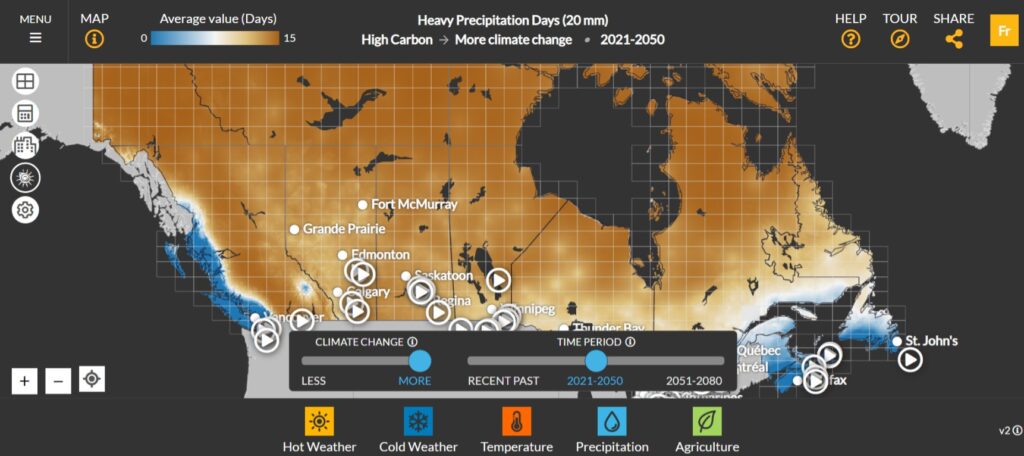Similar to ClimateData.ca, the Climate Atlas includes several future climate variables that are related to droughts and floods, including “Dry Days”, “Extremely Hot days”, “Number of Heat Waves”, “Heavy Precipitation Days” and “Max 1-day Precipitation.”
The Climate Atlas contains several great articles and videos including “Wildfires, Water, and Our Health”, which explains more about the relationships between drought and wildfire, and “Storms of the Future”, a short video on storms and flooding in Nova Scotia.
A great feature on the Climate Atlas, similar to ClimateData.ca, is that you can click on any grid cell or area on the map and a time series graph for the variable you selected will be displayed. From here, you can access more information like detailed climate data that includes more charts, extra downloads such as climate reports in PDF format and data in CSV format. The basic Climate Reports provide region-specific climate information and an easy-to-read synthesis of climate data.


